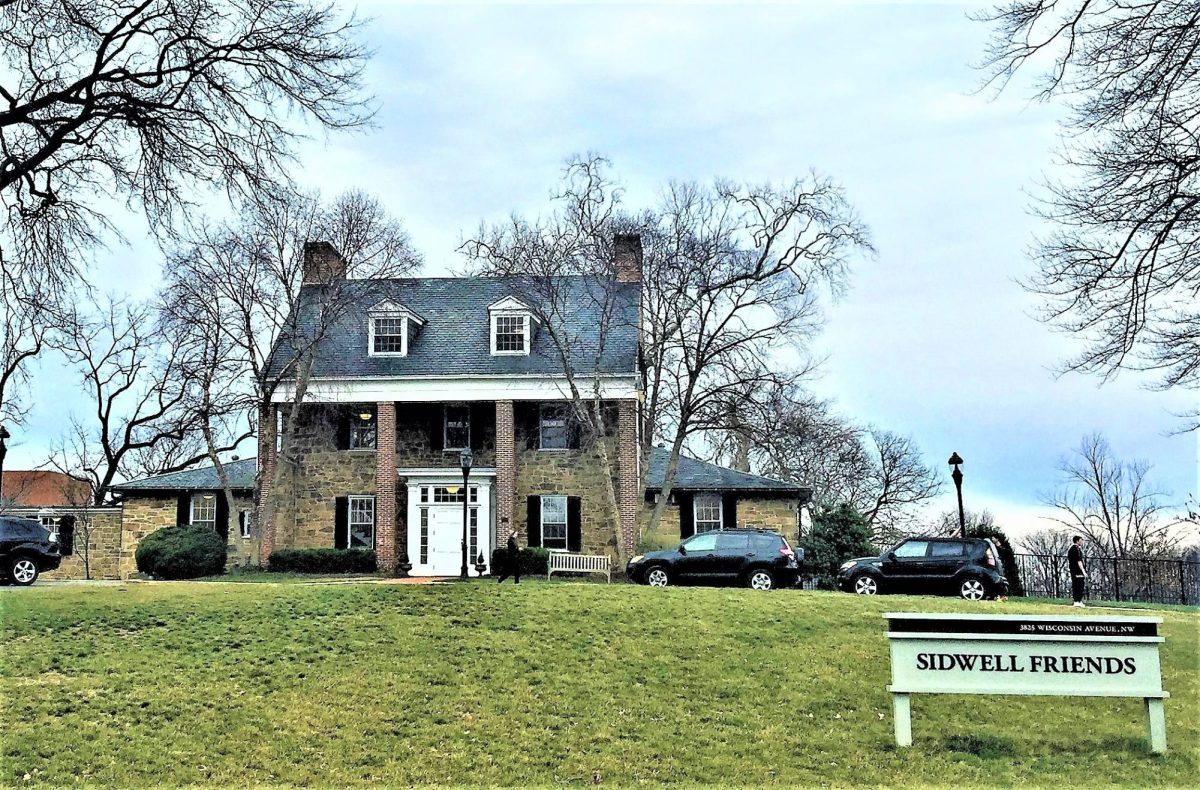
Wikimedia Commons.
If tuition continues to increase, a current kindergartener’s family could pay around $75,000 for high school at Sidwell Friends.
On Jan. 30, the Sidwell Friends Board of Trustees voted to increase tuition by 4% for all grades. This brings tuition rates for the 2025-2026 school year to $59,920 for the Upper School, $59,440 for the Middle School, $56,080 for third and fourth grade and $53,470 for PK through second grade.
In a letter sent to parents, Board of Trustees Clerks Jamie Hechinger and David Milner emphasized that 95% of the additional tuition revenue will go to faculty and staff salaries. They emphasized the importance of keeping these salaries above the current rate of inflation and “ensuring that compensation remains competitive and that we are able to attract and reward talented teachers, a task that has become more challenging at the national level.”
They also highlighted that financial aid will increase by at least the same amount that tuition increased. Of the School’s $10 million financial assistance budget, 50% went to Upper School students; 25% of the Upper School receives some form of financial assistance, with the average grant being $41,000.
“Quakers come from a tradition of social justice,” Head of School Bryan Garman said. “But the economic model of all independent schools, including Quaker schools, depends upon the unequal distribution of wealth. That’s a tension within Quaker schools, and that’s a tension at Sidwell Friends.”
According to the U.S. Census Bureau, the average household income in Washington was $106,000 in 2023. Axios reported that 2022 household incomes dropped significantly post-pandemic, with almost 30% of households in the DC metro area making under $60,000 — the amount Sidwell will soon be charging. Black residents of Washington are unequally affected; DC Health Matters reported the average income for a Black household to be only $74,000 in 2024.
Director of Equity, Justice and Community Natalie Randolph stressed the importance of financial aid as tuition creeps closer to $60,000. “Financial aid not charity … if we want to be an elite school and have the best kids, financial aid is a necessity.”
However, she did concede that tuition is rising at an alarming pace, making the point that “there is only so much Quaker values can do, [because] we do live in a capitalist society.”
Assistant Head of School for Enrollment and Financial Aid Frankie Brown explained how Sidwell is aware that some families affected by mass layoffs from the federal workforce may require additional financial aid. Garman added that “[Sidwell] doesn’t want any student leaving in the middle of their education as a result of that.”
Juniors and seniors who entered Sidwell in kindergarten over a decade ago only paid about $32,000 in tuition. If tuition continues to increase at this rate, a current kindergartener’s family will pay around $75,000 by the time they reach high school. Brown admitted that incomes typically don’t keep up with tuition increases, but said that people would be surprised by what it takes to qualify for financial aid nowadays.
Garman explained that this tuition increase is lower than it has been in previous years. He emphasized that organizations “intensely focused on people” often focus on raising tuition rates or service rates above inflation. He explained that Sidwell is extremely tuition dependent; because of its average sized endowment, 80% of the school’s income comes from tuition. Furthermore, over 60% of the operating budget goes to faculty salaries and benefits, with the school still operating on a deficit each year.
He also stressed that Sidwell does not rely on federal funding. By relying heavily on tuition, “you can create the educational experience that you want,” while also recognizing that “good education is expensive.” He conceded that “there must be” a point at which the cost of a good education outweighs the benefits of the education, though.
Brown hopes financial aid can keep up with the rising tuition, but she’s not concerned as of yet.
“There has been a long conversation about the tuition cliff,” Brown said. “It hasn’t happened yet. We still have waitlists and people are interested.”
Garman did admit he is worried about the trend of tuition reaching higher levels each year, resulting in a less economically diverse student body. He stressed that the best solution to lowering tuition and ensuring Sidwell is not priced out of the market is a larger endowment — “it allows you to wean you from tuition dependence.”
“[T]he only real way to get out of this is for people to give more,” added Randolph. “There is no other way.”